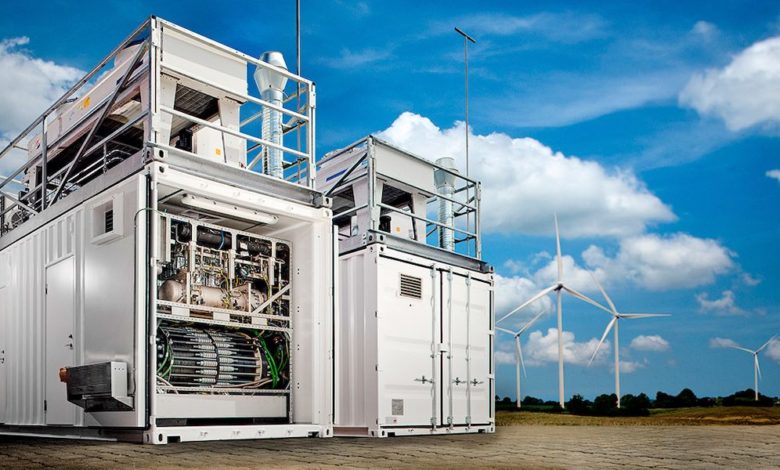Green hydrogen in a box – is this shipping’s future fuel?

Could the humble container house shipping’s fuel of the future? Germany’s Wenger Engineering is pursuing a novel green hydrogen project on land at Bremerhaven with the kit for the fuel packed in a teu and a feu.
The complete test field led by Wenger Engineering will consist of a pressurised alkaline electrolysis equipment from Green Hydrogen Systems, a PEM electrolyser, compression unit, storage system and fuel cells. The test fields’ purpose is to systematically compare the effectiveness of those two different technologies. The electrolysers will also be connected to a virtual electricity network to determine what stabilising effects the connection of multiple decentralised generation units has on the grid.
Another part of the project will test applications in the logistics and transport sector as well as the food industry.
The test results from the test field and operational experience should pave the way for larger-scale hydrogen application in the future.
Wenger Engineering is working with a partner university on the topic of sustainable maritime mobility. It is also carrying out the testing of subsystems for use in ships, a spokesperson for the company told Splash.
“The insights from this project will not only have a significant scaling effect on the hydrogen economy in Germany, but the results can potentially be valuable for all of Europe’s green energy transition,” said David Wenger, CEO of Wenger Engineering.
Wenger Engineering has been a globally sought-after simulation and development partner for leading companies in hydrogen technology such as Daimler, Toyota, Honda and Linde.
Germany has announced an ambitious National Hydrogen Strategy, determined to become a global leader in the associated green hydrogen technologies.

Packed in a teu and a feu????????????
What sort of journalistic gibberish is this?
The correct nomenclature is ‘packed into 20′ and 40′ containers’.
For those who don’t know, a ‘teu’ (more correctly TEU) is a Twenty Foot Equivalent and a(n) feu (more correctly an FEU) is a Forty Feet Equivalent…….foot or feet are optional.
It makes NO sense to talk about TEUs or FEUs when the concept is based on equivalents. In the subject of this article, the object is either one thing or the other (20′ or 40′) – they are not equivalents of each other.
TEUs and FEUs are only abbreviations used to express capacity or throughput for statistical purposes, not for describing specific objects.
Thanks for clarifying what the author probably didn’t know they were saying.
How childishly pedantic. Everyone would know what was meant.
And it’s great news that Hydrogen is making progress as the possible fuel of the future, which of course was the theme of the article.
Well said Martyn.
What happens if the wind s not blowing? Hydrogen produced through electrolysis prefers steady state generation. Wind power is intermittent.
What happens in the event of a major fire in close proximity to the stored hydrogen in containers?